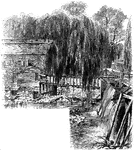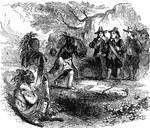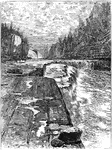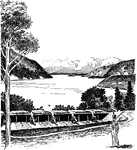The Miscellaneous Illustrations of New York ClipArt gallery includes 87 images related to the Empire State.

Place of Battle at Sandy Creek
The Battle of Big Sandy Creek was fought in northwestern New York on May 29 – May 30, 1814, during…
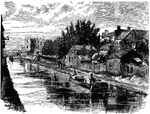
Schenectady
Schenectady is a city in Schenectady County, New York, United States. Pictured here is a bit of old…
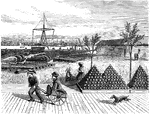
Shipyard Dock
An illustration of the ordinance dock located in the Brooklyn Shipyard. To the bottom right of the illustration…
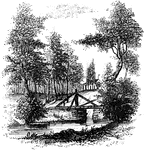
Sleepy Hollow
"Bridge over Sleepy Hollow Creek. Ichabod, according to Irving, in the Legend, returning from…
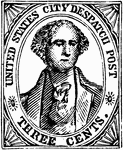
New York City Three Cent Stamp, 1842
New York City Stamp (3 cent) from 1842. This stamp was acknowledged and ordered by the United States…
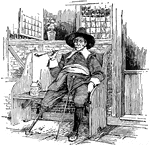
Peter Struyvesant in New Amsterdam
Peter Struyvesant was the last Dutch governor of the New Netherlands colony.
Ticonderoga and the Lake, from Mount Defiance
The crossing between Lakes George and Champlain had been used by natives for thousands of years. The…

Brass Hard Times Token, 1834
Hard Times Token (unknown) US coin from 1834. Obverse has a left-facing sailing ship with the inscription…

Copper Hard Times Token, ND
Hard Times Token (unknown) US coin. Obverse has an image of the front of the Merchants Exchange surrounded…
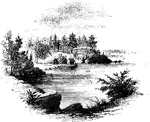
Turtle Bay
"View at Turtle Bay. Turtle Bay is a small rock-bound cove of the East River, at the foot of Forty-seventh…

View of Lake George, N.Y.
Lake George, also known as Queen of American Lakes, is a long narrow lake at the southeast…
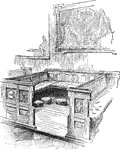
Washington's Pew at St. Paul's, New York
In some churches, pews were installed at the expense of the congregants, and were their personal property;…
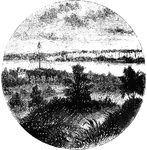
Fort Washington
"View at Fort Washington. This is a view from the site of the interior works at Fort Washington from…

Trenton High Falls
Trenton Falls, a geologist's playground, has been inspiring generations of scientists. Referred to as…

Wayland Valleys
Diagram illustrating the relation of the Dansville to the Wayland Valleys. The floor of the Wayland…

West Point
"West Point in 1780. This view is from a print published in the New York Magazine for 1790.…



